Head therapy
What is a central slip injury?
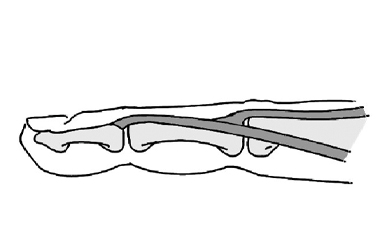
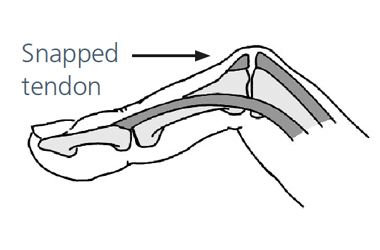
The injury you have sustained is known as a central slip injury which is sometimes called a boutonniere deformity. This means that part of the tendon which straightens the middle joint of your finger has been injured. This may have been caused by an impact to the middle joint or because of a cut on the back of the finger near the joint.
What treatment will I expect to undergo?
During the healing phase your tendon will need strict care. It will take up to 12 weeks for your tendon to fully heal and be strong enough for you to return to unlimited activities.
If your tendon was cut you may have required surgery to repair the damaged tendon. You must keep the middle joint in your injured finger/s completely straight (not allowing it to bend for any reason) for the first three weeks. You will be given a made to measure thermoplastic splint which will hold the middle joint in your finger completely straight.
After this you may be required to wear a different splint during the day and your original splint over night for a further three weeks. You will be guided by your therapist regarding this.
The new splint will allow your middle joint to bend however protect the healing tendon while it straightens until it is strong enough to do this on its own.
What follow up hand therapy should I expect?
You will be given an appointment with the hand therapy department approximately one week after your splint was made. This appointment will be to check your splint is fitting correctly and maintaining your finger in a straight position to allow the tendon to heal.
Your skin and any potential wound will also be checked and you will be given advice if appropriate about massaging your scar.
At approximately three weeks following your injury (if repaired via surgery) or commencement of splinting you will be given another hand therapy appointment.
After this you will be seen by the hand therapy team on a regular basis to progress your hand therapy.
Why is it important to exercise?
Exercises are important to allow your tendon to heal and will reduce stiffness and swelling in your finger.
Your hand therapist will teach you exercises which you must complete on a regular basis through out the day – normally every one to two hours. Your hand therapist will advise you of when to move onto new exercises.
Weeks one to three
Isolated MCPJ (back knuckles) flexion and extension
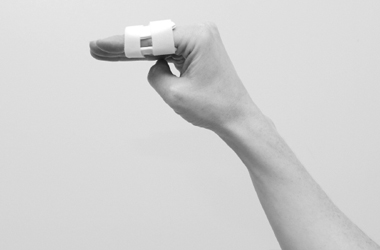
Bend your fingers from the knuckles, making sure that you keep your fingers straight. Hold this position for 5 seconds and then straighten. Repeat 10 times every 1 to 2 hours
Isolated DIPJ (tip joint) flexion and extension
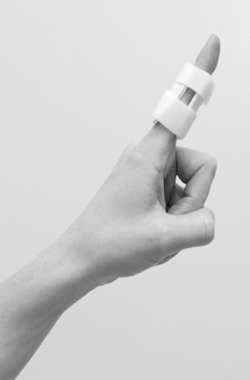
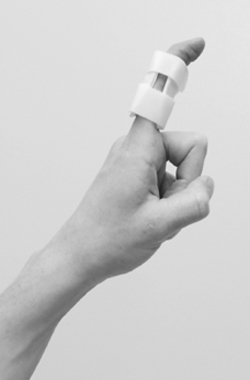
Gently bend the tip of your finger over the edge of the splint and hold for 5 seconds. Then, straighten your finger tip and hold for 5 seconds.
You can hold the splint onto your finger with the other hand if this is easier. Make sure you keep the joint that has been splinted, straight. Repeat 10 times every 1 to 2 hours.
Week three onwards:
Isolated PIPJ (middle joint) flexion and extension
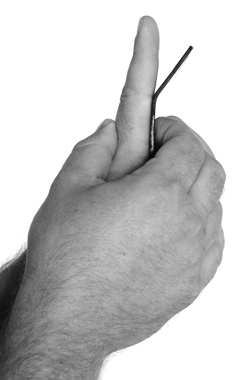
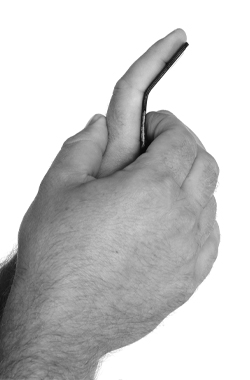
Using the angled board provided by your therapist gently bend at the middle joint towards the board and then return your finger to a straight position. Repeat 10 times every 1 to 2 hours.
Each week the angle of the board will be increased depending upon your progress. Continue to complete the original exercises provided.
You may be shown some additional exercises depending on your progress – please follow your hand therapists instructions.
What general advice should I follow?
- You can use your hand for daily activities with the splint always remaining in place – however you should avoid any heavy gripping or lifting until advised by your hand therapist
- Driving should be avoided until advised by your hand therapist
- Elevating your hand above your heart can help to reduce any swelling in your hand or fingers
- It is important you keep the normal movement at all of your joints that are not splinted – this includes other fingers and thumb, wrist, elbow and shoulder
- Don’t allow your splint to be exposed to heat as the plastic may melt and change the fit of the splint on your finger.
What problems might I have?
- Sore skin under the splint
- Splint too big and not staying in place with your middle joint no longer protected
- Splint too tight if swelling increases
- Signs of infection (increased pain, redness, swelling and feeling generally unwell)
Who should I contact if I have any problems?
If you have any problems or questions regarding your hand therapy please contact the hand therapy team on:
Patient experience
South Tees Hospitals NHS Foundation Trust would like your feedback. If you wish to share your experience about your care and treatment or on behalf of a patient, please contact The Patient Experience Department who will advise you on how best to do this.
This service is based at The James Cook University Hospital but also covers the Friarage Hospital in Northallerton, our community hospitals and community health services.
To ensure we meet your communication needs please inform the Patient Experience Department of any special requirements, for example; braille or large print.
T: 01642 835964
E: [email protected]